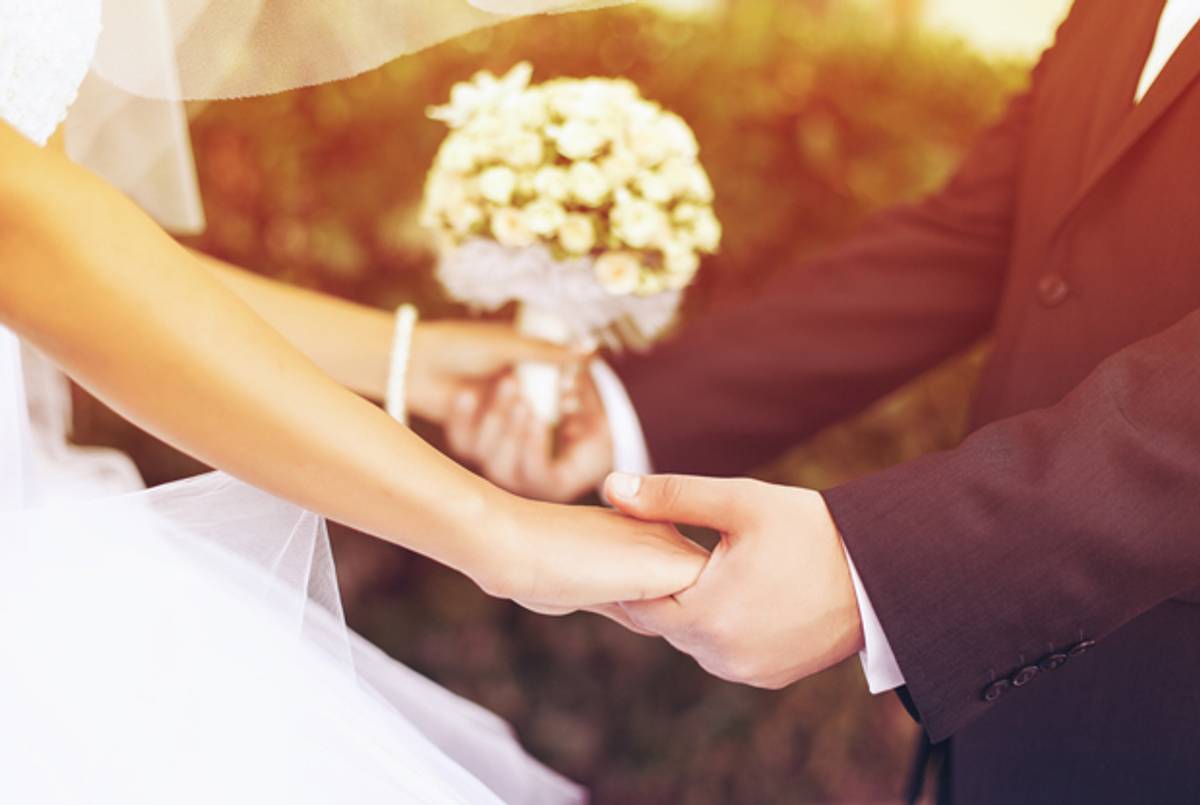
Earlier this month, Congresswoman Debbie Wasserman Schultz, chair of the Democratic National Committee, had to walk back some comments she’d made, in which she’d called intermarriage a “problem” and fretted about how young Jews weren’t connected to Jewish traditions and institutions. While she ultimately clarified that she wasn’t against intermarriage per se, the ensuing media response among both Jewish and mainstream outlets was predictably rapid and unforgiving.
With Valentine’s Day on the horizon—a holiday devoted to affirming the promise that a loving connection between two individuals can hold—we would like to offer a perspective on the season based on a unique research project we’ve been overseeing since early in our own relationship.
For us, a Jewish-Asian couple, Valentine’s Day holds special memories. After meeting at a mutual friend’s dinner party on a cold Chicago February evening many years ago, one of us (Noah) asked the other out for a Valentine’s Day glass of wine, little knowing that Helen was already romantically involved. Once in a relationship, we started wondering what happens when Jews and Asians—two oft-compared groups—form households and raise children. We were particularly interested in how such households transmit the various strands of racial, ethnic, and religious identity.
Our investigation has proceeded in two stages. First, we interviewed 31 intermarried couples living in the Los Angeles, Orange County, San Francisco, Oakland, New York, and Philadelphia metropolitan areas. Based on those discussions, in a 2012 article in Contemporary Jewry, we argued that these couples were strongly committed to creating Jewish households and, where they had children, were raising those children with a strong Jewish identity.
We then interviewed 22 adult children, ages 18 to 25, of Jewish-Asian intermarriages, who resided in the San Francisco Bay Area and in parts of the northeast United States. Last month, in an article in the Journal of Jewish Identities, we argued that children from Jewish-Asian households are in fact creating the sense of strong Jewish identity that the parents in our earlier study had described.
Moreover, despite not having a physical appearance like a stereotypical Ashkenazi Jew—the image that many Americans have of what Jews “look like”—these young people are highly attached to their Judaism in religious, cultural, and tribal terms. In fact, many of these young people, members of America’s growing multiracial population, including its multiracial Jewish population, take delight in confounding people who ask them, “where are you from?” They see opportunities to add richness and complexity to the eternal question, “Who is a Jew?”
We’ve found, somewhat to our surprise, that these mixed and usually religiously intermarried households are creating Jews who, in many cases, are even more Jewish than their Jewish parent or parents (some of these households have two Jewish parents, one of whom is racially Asian). Rather than moving away from Judaism, some of these young people are moving toward it and challenging the doom and gloom of some pundits.
During the time that we’ve been working on this project we’ve had two children, Ari and Talia, who, as much as a six- and a three-year old can explain it, are Jewish. Like many of the young people we’ve met over the past seven years, Ari and Talia go to our local synagogue, have an active Jewish practice inside our home, and associate themselves with their Jewishness. They may not present as Jewish to some, but they know they are Jewish based on their family and communal practice.
While we recognize that Ari and Talia will face challenges to their Jewish authenticity, we also know that their future is promising. In December, we and much of America were treated to a poignant image: President Obama lighting a menorah at the annual White House Hanukkah party, accompanied by Rabbi Angela Warnick Buchdahl, the leader of Manhattan’s Central Synagogue, one of the most influential Reform congregations in the country. Rabbi Buchdahl is the daughter of a Korean Buddhist immigrant and an American Jew who grew up in Tacoma, Washington, just over the Cascade Mountains from where we live.
In a line that seemed impossible to disagree with, Rabbi Buchdahl told President Obama, “I have to predict that [our Founding Fathers] could not imagine that in 2014 that there would be a female, Asian-American rabbi lighting the menorah at the White House for an African-American president.” At the highest possible echelon of access and visibility, an Asian-American Jewish female, similar to many of our interviewees and our daughter, was the representation of the possibility of American Judaism. With the variety of secular and religious leaders from mixed race and mixed religious backgrounds together in a sacred moment in a public space, it was an image of where the United States is headed, regardless of Rep. Wasserman Schultz’s thoughts on the matter.
Helen Kim is associate professor of sociology, and Noah Leavitt is associate dean of students at Whitman College in Walla Walla, Wash.
Related: Intermarriage, I Do!
Romance Bloomed for a Jew and an Asian American, Until Tribalism Trumped Love
Making a Jewish Home
Helen Kim is associate professor of sociology, and Noah Leavitt is associate dean of students at Whitman College in Walla Walla, Wash.